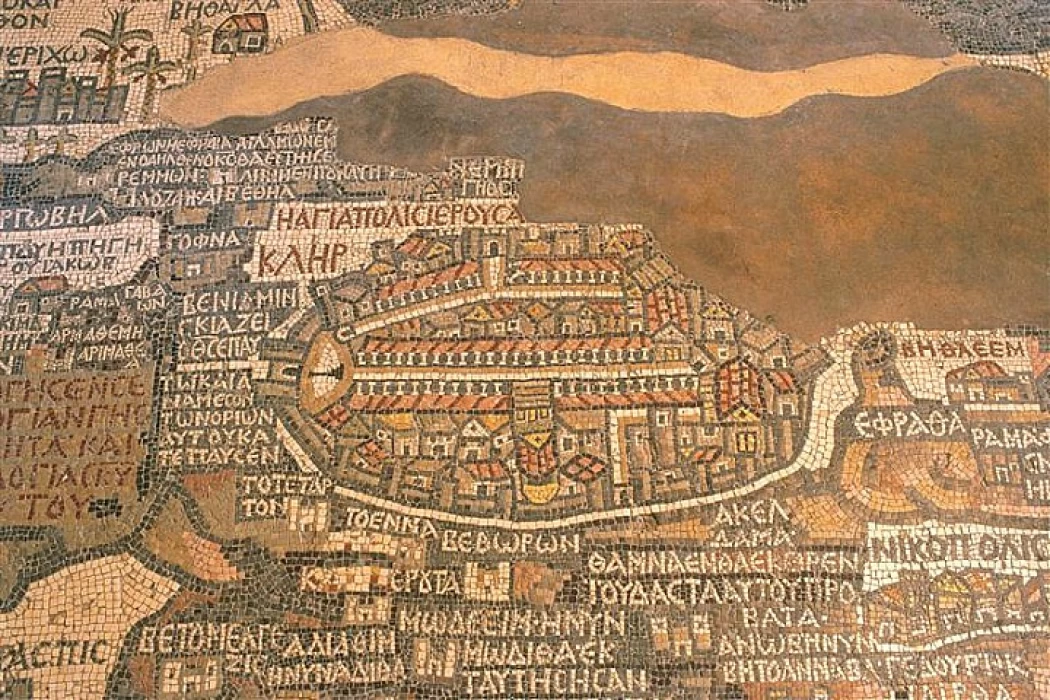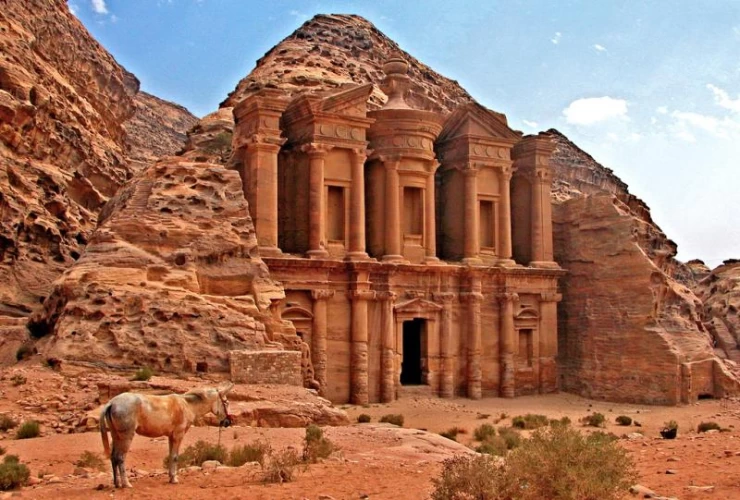
Madaba | Jordan Attractions
Madaba Jordan
The journey south from Amman along the ancient Kings Highway, which dates back over 5,000 years, winds through a series of ancient sites and represents one of the unforgettable routes that characterize the Holy Land.
The first city we meet is Madaba, "the city of mosaics"; known above all for its spectacular Byzantine and Omayyadic mosaics, here you can see the famous mosaic map of Jerusalem and the Holy Land from the 6th century.
With two million colored stone tiles, the map depicts hills and valleys, villages, and cities up to the Nile delta. Other mosaic masterpieces found in the Church of the Virgin and Apostles and preserved in the Archaeological Museum, depict a lush profusion of flowers and plants, birds and fish, exotic animals, and beasts.
The city of Madaba, home to the largest Christian community in Jordan, is located just 30kms from Amman and its great highlight is undoubtedly the Greek Orthodox Church of Saint George, where the famous map of the Holy Land is made in Byzantine mosaic. For those who visit Jordan, Madaba is another of the must-see destinations.
This mosaic dates from the 6th century, and in its nearly two million pieces, it depicts mountains and valleys, villages and towns in Palestine, and the Nile Delta as well as the oldest representation of Jerusalem from the Byzantine era. In addition to many more mosaics worthy of being appreciated throughout the church.
A well-traveled bridge between sea and desert, east and west, the Hashemite Kingdom of Jordan is a land of mesmerizing beauty and contrasts, from the Jordan Valley, fertile, and ever-changing, to the remote desert canyons, immense and still. Visitors can explore splendid desert castles, gaze in awe at the haunting wilderness of Wadi Rum, or bathe in the restful waters of the Red Sea.
Latest Articles
Admin
Seabourn Sojourn Cruise Stops in Safaga Port
The Seabourn Sojourn, the flagship vessel of Seabourn Cruise Line's ultra-luxury fleet, was built in 2008 at the T. Mariotti shipyard in Genoa, Italy. Measuring 198 metres, it can accommodate up to 450 guests in its 225 spacious all-suite staterooms.
Admin
Norwegian Sky Cruise Stops in Safaga Port
Norwegian Cruise Line operates a cruise ship called the Norwegian Sky. It was constructed in 1999 and can accommodate 2,004 passengers in addition to 878 crew members. The ship has several dining establishments, lounges and bars, a spa and fitness center, swimming pools, and a number of entertainment areas.
Admin
Explora II Cruise Stops in Safaga Port
Explora II, the second vessel in the Explora Journeys fleet, sets sail in 2024 to redefine luxury cruising. With 461 ocean-front suites, 9 culinary experiences, and 4 pools, this haven of sophistication and sustainability promises an unforgettable "Ocean State of Mind" journey to inspiring destinations.
Admin
Mein Schiff 6 Cruise Stops in Safaga Port
The Mein Schiff 6 is the latest cruise ship in the renowned TUI Cruises fleet, offering passengers a luxurious and sophisticated cruise experience. At 315 metres long, this floating resort features a range of dining options, entertainment, and recreational facilities, including a spa, fitness centre, and sports amenities.
Admin
Mein Schiff 4 Cruise Stops in Safaga Port
When the Mein Schiff 4 cruise ship docks in Safaga, Egypt, passengers are granted access to a realm of ancient wonders. Aboard this state-of-the-art vessel, guests can embark on meticulously curated shore excursions that showcase the region's most iconic landmarks, including the Giza Pyramids, the enigmatic Sphinx, and the remarkable tombs and temples of the Valley of the Kings in Luxor.
Admin
MS Europa Cruise Stops in Safaga Port
The Silver Moon, Silversea's latest flagship, is a luxury cruise ship that offers an exceptional travel experience for Venezuelans exploring Egypt. With a capacity of 596 guests and an impressive 40,700 gross tonnes, the Silver Moon maintains the small-ship intimacy and spacious all-suite accommodations that are the hallmarks of the Silversea brand.














